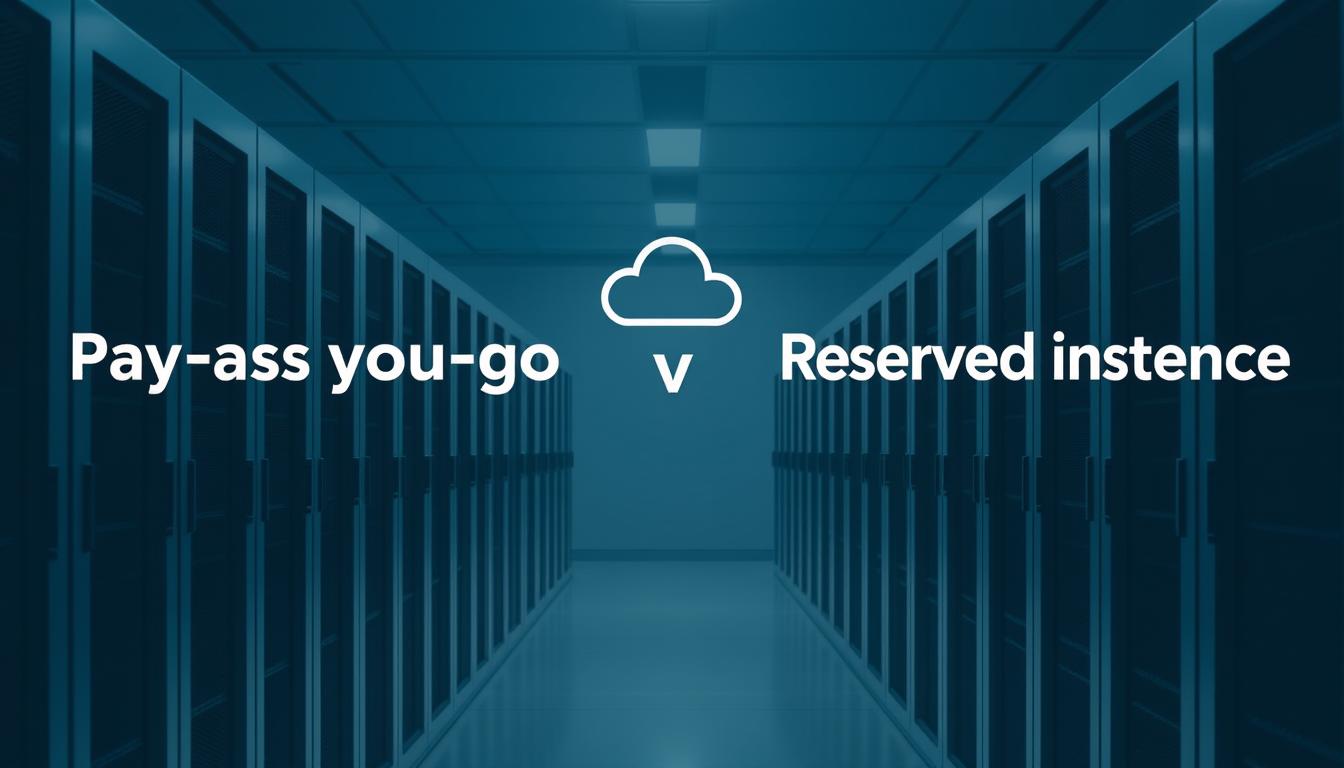In the realm of cloud computing, the distinction between pay-as-you-go and reserved instances in cloud servers is paramount for your enterprise. The selection of an appropriate billing model is critical, as it profoundly influences both your expenditure and resource utilization. By grasping the nuances between these two paradigms, you can make a well-informed choice that resonates with your organizational objectives.
As you navigate through your decision-making process, it is imperative to weigh the merits of pay-as-you-go against reserved instances in cloud servers. This evaluation will enable you to ascertain which model best aligns with your specific requirements, whether it be the adaptability of pay-as-you-go or the fiscal advantages of reserved instances. Opting for the most suitable cloud server billing model will allow you to maximize your resource utilization and enhance your financial performance.
Understanding Cloud Computing Billing Models
In the realm of cloud servers, the selection of an appropriate billing model is paramount for cost optimization. Two primary models stand out: pay-as-you-go and reserved instances. A thorough comprehension of each model’s operational dynamics and their respective advantages is imperative for a well-informed decision-making process. The pay-as-you-go model affords the flexibility to only pay for utilized resources, thereby offering scalability and adaptability. Conversely, reserved instances demand an initial commitment in exchange for reduced rates, catering to workloads with stable and predictable usage patterns.
The pay-as-you-go model is particularly advantageous for workloads characterized by variable or unpredictable usage patterns. It enables the scaling of resources up or down as required, without the burden of substantial upfront expenditures. Reserved instances, however, are more suitable for workloads with consistent usage patterns. By committing to a specific instance type and usage term, users can reap substantial cost savings over the long term.
- Pay-as-you-go: flexible and scalable, ideal for variable workloads
- Reserved instances: cost-effective for stable workloads with consistent usage patterns
As you navigate through the options for cloud servers, it is crucial to consider your specific requirements and usage patterns. By selecting the most suitable billing model, you can optimize your expenses and ensure that your cloud infrastructure aligns with your business objectives. Regardless of whether you choose pay-as-you-go or reserved instances, a deep understanding of each model’s fundamentals is essential for making an informed decision.
Key Differences Between Pay-As-You-Go and Reserved Instances
In the realm of cloud server billing models, discerning the distinctions between pay-as-you-go and reserved instances is paramount for cost optimization and enhanced business efficiency. An examination of the cost structures of each model, encompassing the associated expenditures, is imperative for a well-informed decision-making process. The pay-as-you-go model, characterized by its flexibility, contrasts with reserved instances, which promise cost savings over the long term.
The cost framework of pay-as-you-go models is predicated on actual usage, enabling only the payment for utilized resources. Conversely, reserved instances necessitate an upfront commitment, yet offer discounted rates in exchange for a long-term contractual obligation.
Cost Structure Comparison
- Pay-as-you-go: usage-based pricing, no upfront costs
- Reserved instances: discounted rates for long-term commitments
Flexibility and Scalability
Pay-as-you-go models afford greater flexibility, permitting scalable adjustments without contractual obligations. Reserved instances, while less adaptable, offer a stable and predictable cost framework, facilitating more effective budgeting and future planning. By grasping the fundamental differences between pay-as-you-go and reserved instances, businesses can select the most suitable cloud server billing model, thereby optimizing their costs.
When to Choose Pay-As-You-Go
In the realm of cloud server billing, discerning the optimal choice between models is paramount. Pay-as-you-go emerges as the preferred option for entities with fluctuating or indeterminate operational demands. This paradigm ensures financial prudence by only charging for actual resource utilization, thereby enhancing budgetary predictability and reducing expenditure.
The core advantage of pay-as-you-go lies in its capacity to refine cloud server expenditure. By only incurring costs for utilized resources, it mitigates the risk of overprovisioning and associated inefficiencies. This is particularly advantageous for applications characterized by variable workloads, such as those experiencing periodic spikes in traffic or usage. On-demand billing facilitates rapid scalability adjustments, ensuring that resource allocation remains congruent with operational requirements.
- Applications with variable or unpredictable workloads
- Startups or small businesses with limited budgets
- Development and testing environments where resources are only needed temporarily
Opting for pay-as-you-go enables entities to leverage on-demand billing and only incur costs for utilized cloud servers. This approach fosters cost reduction, enhances operational flexibility, and bolsters business agility.
Advantages of Reserved Instances
In the realm of cloud server cost optimization, reserved instances emerge as a pivotal strategy. By dedicating a specific quantity of resources for a predetermined duration, substantial cost savings can be achieved over the long term. This method facilitates more precise budgeting and expense forecasting, thereby mitigating the likelihood of unforeseen financial burdens.
The primary advantage of reserved instances lies in the potential for considerable cost savings. By pre-reserving resources, one can capitalize on discounted rates, leading to a marked decrease in total cloud expenditures. This is particularly advantageous for entities with stable workloads, enabling them to engage in more effective financial planning and budgeting.

- Improved budgeting and forecasting
- Reduced risk of unexpected bills
- Increased cost savings over time
- Enhanced stability and reliability
Utilizing reserved instances can significantly enhance your cloud server cost management and overall business efficiency. Whether your goal is to diminish expenses or to exert greater control over your cloud spending, reserved instances present a compelling option for consideration.
Evaluating Your Business Needs
To select the optimal cloud server billing model, a thorough evaluation of your business requirements is imperative. This necessitates an examination of your current usage patterns and projections for future expansion. By comprehending your cloud server utilization, you can discern between the pay-as-you-go and reserved instances models. The choice between these models can profoundly influence your business expenditures, mandating a well-informed decision-making process.
In the assessment of your business needs, it is crucial to consider both your historical usage and anticipated future growth. Employing data analytics and trend analysis can facilitate the prediction of your forthcoming cloud server demands. This predictive capability will enable you to determine whether the pay-as-you-go or reserved instances model aligns better with your business objectives. The former offers adaptability, whereas the latter promises cost efficiencies over the long term.
Several pivotal factors must be taken into account when evaluating your business needs:
- Current cloud server usage and associated costs
- Projected future growth and anticipated usage increments
- Requirements for flexibility and scalability
- Cost savings and budgetary constraints
By meticulously analyzing these elements, you can make an informed choice regarding your cloud server billing model. This decision will enable you to optimize your cloud server expenditures and enhance your business’s operational efficiency.
The Impact of Workload Variability
Understanding the nuances of workload variability is paramount in the realm of cloud server cost management. It necessitates an examination of how your workload ebbs and flows over time, thereby influencing your financial outlay. Workload variability exerts a profound impact on your expenses, particularly when employing a pay-as-you-go model. This model, which only charges for utilized resources, becomes challenging to navigate when faced with unpredictable workload fluctuations.
Conversely, reserved instances offer a pathway to cost savings, particularly for workloads that exhibit consistency. Nonetheless, for variable workloads, reserved instances might not be the optimal choice. It is imperative to meticulously evaluate the advantages and disadvantages of each model, aligning them with your specific requirements. Several factors warrant consideration:
- Cost structure: Pay-as-you-go models charge only for actual usage, whereas reserved instances demand an upfront commitment.
- Flexibility: Pay-as-you-go models afford greater flexibility, allowing for dynamic scaling, whereas reserved instances necessitate a longer-term commitment.
Efficient resource management is fundamental to optimizing cloud server costs. Leveraging automation and optimization techniques can ensure the deployment of resources commensurate with your workload. By grasping the intricacies of workload variability and selecting the appropriate pricing model, you can curtail costs and enhance efficiency. A judicious blend of pay-as-you-go and reserved instances can yield optimal results. 
Pricing Strategies and Discounts
Optimizing cloud server costs necessitates a deep understanding of pricing strategies and available discounts. The selection of pricing models, such as pay-as-you-go and reserved instances, is pivotal. Each model presents unique advantages and disadvantages, mandating a thorough exploration to align with your business objectives.
Cloud servers proffer a variety of pricing strategies, including discounts for extended commitments and bulk purchases. Leveraging these discounts can substantially diminish your cloud server expenditures.
Understanding Pricing Models
Several pricing models are available for cloud servers, including pay-as-you-go, reserved instances, and spot instances. Each model’s merits and demerits must be weighed against your specific requirements and usage patterns. For instance, pay-as-you-go pricing affords flexibility and scalability, whereas reserved instances offer long-term cost savings.
Exploring Discount Options
Cloud servers also present a range of discount opportunities, encompassing volume discounts, loyalty discounts, and promotional offers. By capitalizing on these discounts, you can effectively lower your cloud server costs and optimize your financial planning. It is imperative to scrutinize the available discount options and select those most conducive to your business goals.
By comprehending pricing strategies and discounts, you can make strategic decisions regarding your cloud server expenses. Whether opting for pay-as-you-go, reserved instances, or spot instances, it is crucial to consider your usage patterns and business needs to optimize costs. With the appropriate pricing strategy and discounts, you can significantly reduce your cloud server costs, thereby enhancing your financial performance.
Making an Informed Decision
In the realm of cloud server billing models, an informed decision is paramount. Employ cost estimation tools, offered by cloud providers and third-party entities, to accurately forecast your cloud infrastructure expenditures under diverse scenarios. These instruments facilitate the comparison of long-term savings from reserved instances against the adaptability of pay-as-you-go pricing models.
Tools for Cost Estimation
Utilize the pricing calculators provided by prominent cloud providers such as AWS, Microsoft Azure, and Google Cloud to estimate the costs of your cloud infrastructure. These calculators enable you to input your specific workload requirements and usage patterns, yielding a personalized cost breakdown.
Expert Recommendations and Best Practices
Seek counsel from cloud experts and industry analysts to gain insights into optimizing your cloud server costs. They offer invaluable advice on effectively leveraging reserved instances, managing variable workloads, and adopting cost-saving strategies. Remain abreast of the latest cloud pricing trends and discounts to maximize your cloud investments.
